Updated August 2024 – with new SDF fee
Bhutan is a small and mystical country located in the Eastern Himalayas. It is known for its stunning scenery, ancient Buddhist monasteries, and very unique culture. It is also the first and only country in the world to be carbon neutral – very impressive. However, Bhutan is also one of the most expensive countries in the world to visit.
Why? Well, Bhutan has a new travel policy that required tourists to pay a per night fee of $100 per person called the Sustainable Development Fee (SDF). This fee is in addition to the cost of flights, guides, drivers, accommodation, food, and other expenses. As a result, the mystical land of the Thunder Dragon can be pricey.
In this post, we will share our experience of visiting Bhutan on a very packed 3 day itinerary, visiting all the top sights of the country. We will discuss the cost of our trip, how we minimized this additional nightly fee, what we saw and did, and answer our own question, “is Bhutan worth the cost”.
Getting in and out of Bhutan – Minimizing Cost
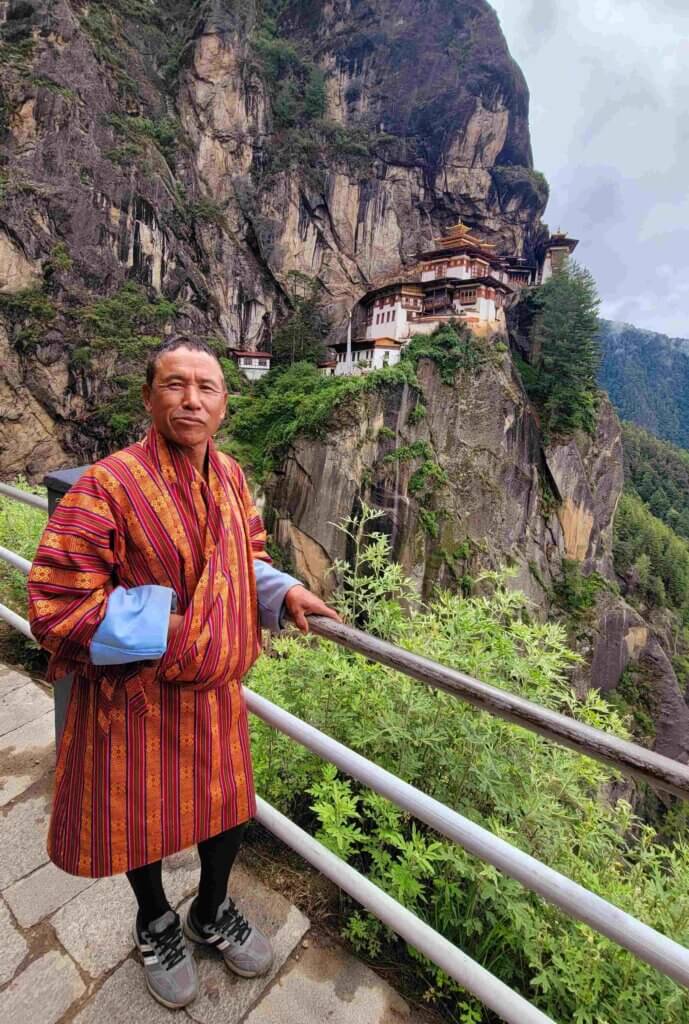
Because of this SDF nightly fee, how we get in and out of Bhutan becomes an even more important question. Since the fee is nightly, the goal is to get into the country as early as possible in the day. And getting out as late as possible in the day.
We flew in from Dhaka, Bangladesh on a $250 USD per person DrukAir flight into Paro. The flight got us in at 8:20 am. The flight back out was at 4:30 pm (16:30). Therefore we got (almost) a whole day for free – avoiding the additional nightly SDF $200 USD fee.
Another way to get into the country is through the Jaigaon Indian border. Some guides including ours picks people up either at that border or even at Bagdogra Airport (IXB) in West Bengal India.
However, given that “Time is Money”, the drive from the Jaigaon Indian border into Paro is approximately 4 hours. The border is open 24 hours a day. Therefore if you can arrange the guide to pick you up in the middle of the night, then you are minimizing the costs considerably.
Choosing your Guide
There are many professional guides and tour services in Bhutan to choose from. We prefer guides who are flexible, cost conscious and not 9-5 types.
The new rules require tourists to hire a guide and a driver. We chose a small two person organization called “Best Journey to Bhutan”. It is run by a licensed travel agent – Mr. Wangchuk Wangchuk (What’s App:+975 176 28 651) and his female guide colleague Gyembo. They were very professional, accommodating, budget conscious, and provided us with 5 star service.
Getting the Bhutan Visa
For us, the visa process was quite seamless. Our guide did all the work and the approved visa was emailed to us within a week of the application.
However if you need to do it on your own here is the link to the visa process. It takes up to 5 days (although most applicants get their visa in a shorter time frame). The visa cost is $40 USD per person.
Sustainable Development Fee (SDF)
As previously mentioned, the Sustainable Development Fee (SDF) has dropped considerably since we visited and is now $100 USD per person per day.
The funds raised through the SDF are utilized for projects that promote Bhutan’s economic, social, environmental, and cultural development. These include initiatives such as preserving cultural traditions, enhancing sustainability, upgrading infrastructure, and providing free healthcare and education.
Bhutan 3 Day Budget Itinerary
Day 1
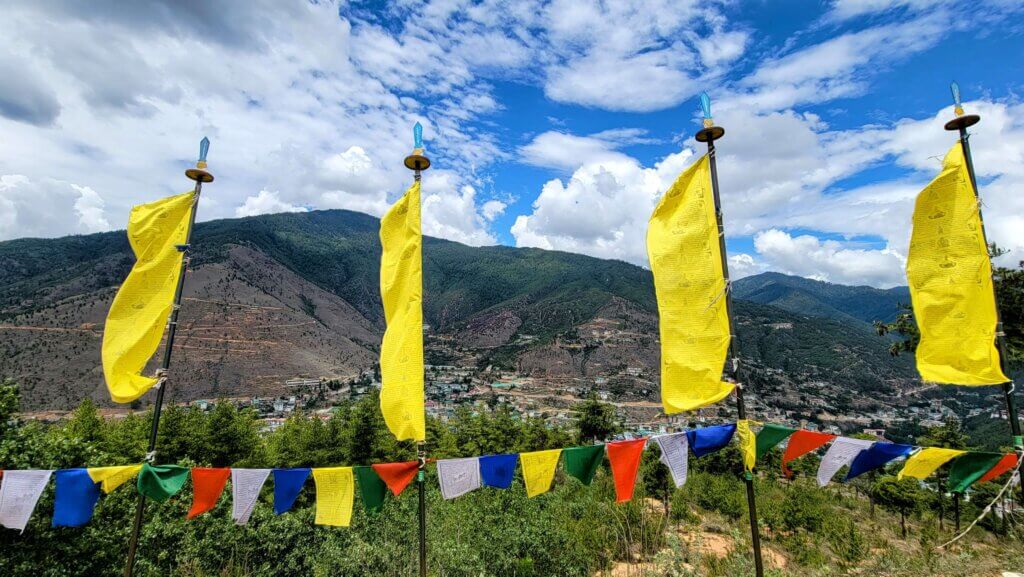
We arrived in Paro early in the morning. The immigration process was quick and seamless. Exiting the airport we were immediately transported into a land from another time. All of the locals were dressed in traditional Bhutanese clothes, as were our smiling and welcoming guide and driver who were waiting for us outside.
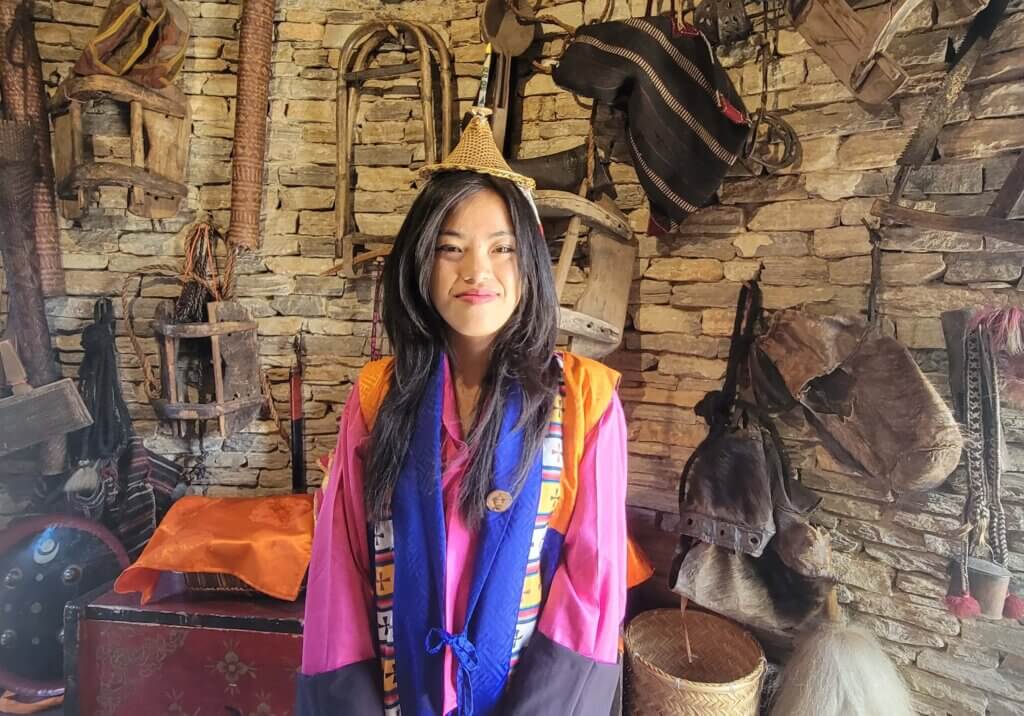
First thing on the itinerary was to visit the Simple Bhutan Museum. This museum is a great way to learn about Bhutanese culture and history. The staff are very friendly and interactive. They sing and dance their way through the tour, demonstrating the culture of Bhutan.
After the museum, we drove to Dochula Pass to see the sights there. Dochula Pass is a high mountain pass with stunning views of the Himalayas. There is a restaurant there, a park, a monastery and a monument with 108 Stupas.
We then drove to Punakha, where we visited Punakha Dzong. Punakha Dzong is a beautiful 17th-century fortress that is located on a confluence of two rivers. From the fortress, we walked over to the Punakha Suspension Bridge. This bridge is one of the most photographed landmarks in the country.
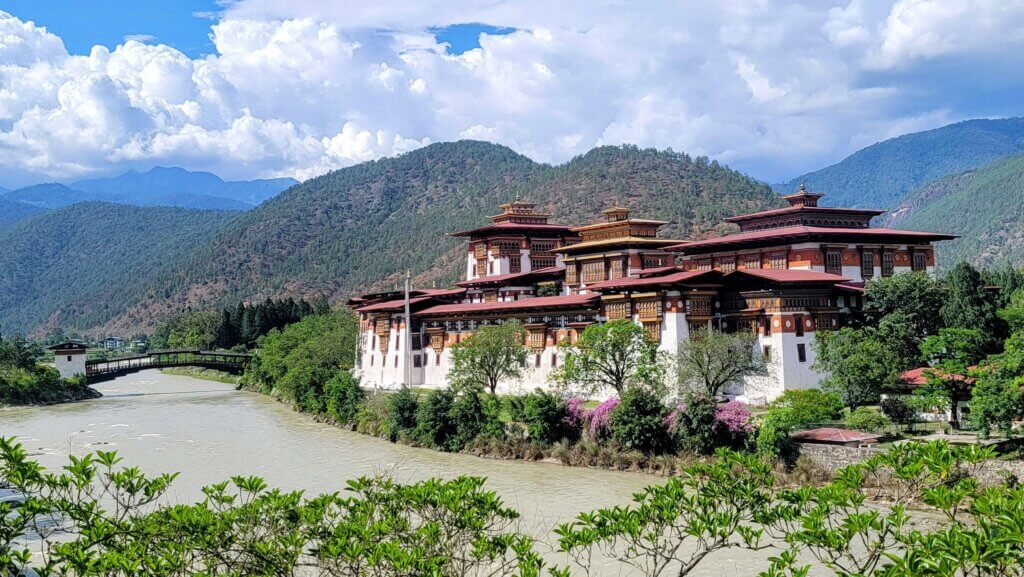
On our last stop of the day, we crossed yet another suspension bridge and hiked up to the Khamsum Yulley Namgyal Choeten. This Buddhist temple is located on a hilltop and offers panoramic views of the surrounding area. On our way to the hotel, we took pictures of the Punakha Dzong at night.
It was already past 8:00 pm and we were exhausted. Rob had a beer and some dinner in the hotel, while I chose to sleep.
Day 2
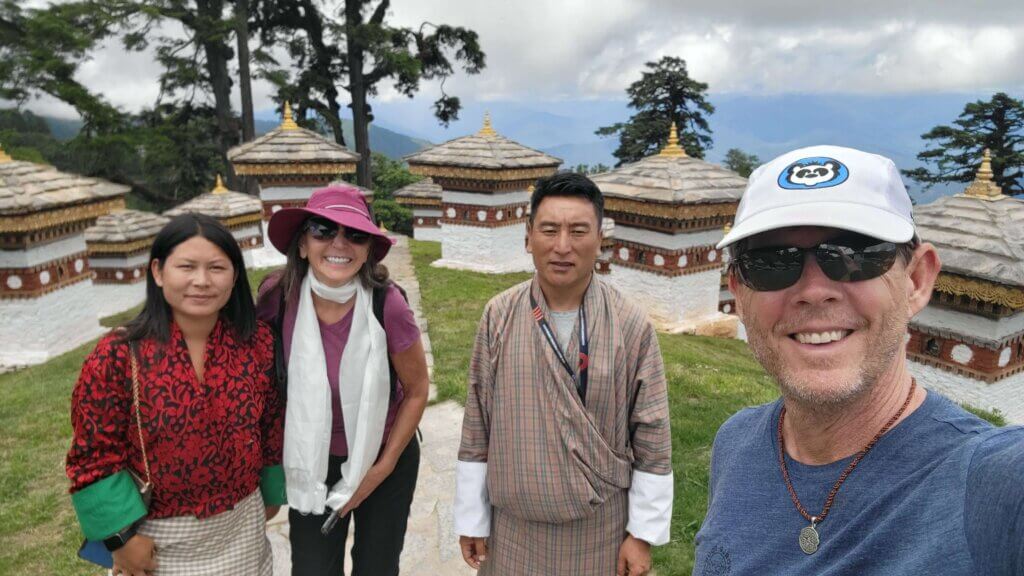
Our second day started early with a traditional Bhutanese breakfast of fried vegetable rice and tea in our family run hotel.
Our driver then drove us from Punakha back to Dochula Pass. This time the Pass was quite cloudy. It gave the surroundings a mystical feel. We walked around the Anniversary Park and foraged for wild strawberries growing right in the park. Many Bhutanese come to this area to walk around it in a clockwise direction for 108 times.
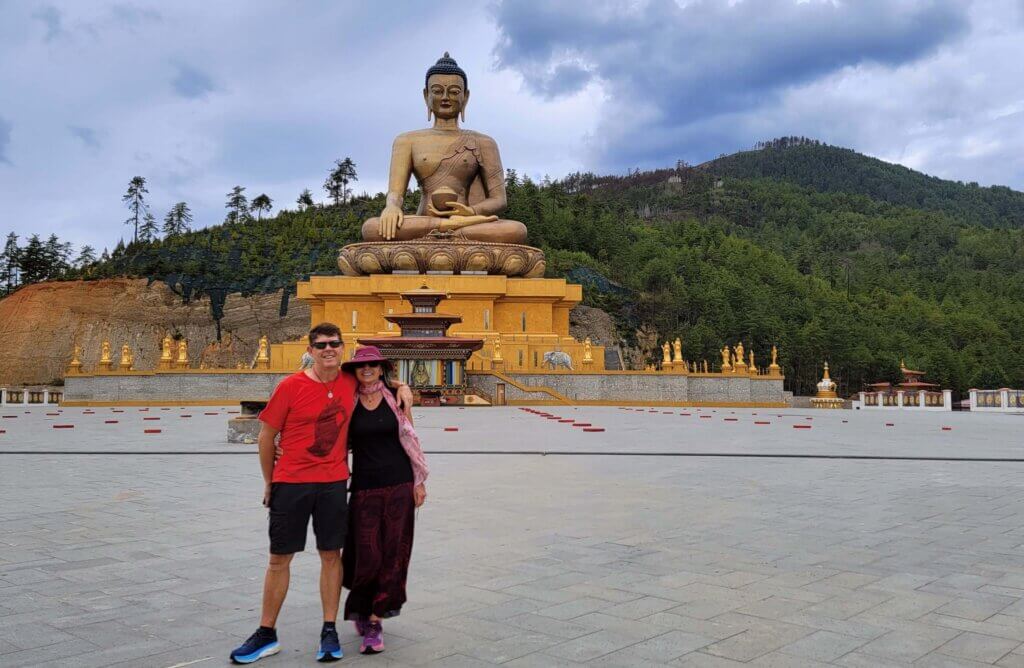
Next up was the countries capital – Thimphu, where we stopped at the giant Buddha statue called, Buddha Dordenma.
We then stopped to take pictures of the Tashichho Dzong viewpoint and the very modest Presidential Palace (where the King and Queen reside). The Tashichho Dzong are the government buildings of the country.
Lunch was in an upscale restaurant in Thimphu. Followed by a stroll down the capital’s main street. This street is lined with stands selling handicrafts and souvenirs. My banana leaf change purse from Thailand needed to be replaced, so I purchased a handwoven one from a Bhutanese weaver. The cost was $1 USD. As an aside, the costs of goods and services, once inside the country, are very low.
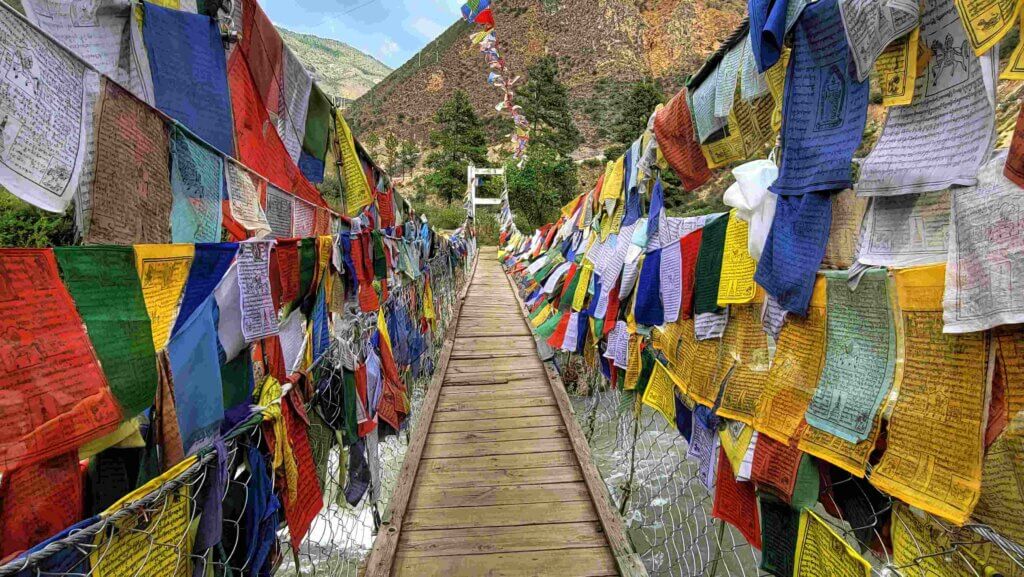
On our way back to Paro, we stopped to take a look at Tachog Lhakhang. This Buddhist monastery is located across a suspension bridge on a hilltop and offers views of the Paro Valley.
Once back in Paro we walked around the city’s colorful and vibrant farmers market, taking in the sweet scents of the local fruits for sale. Later we strolled down the trendy main street of Paro, browsing through many of the cities’ jewelry and handicraft shops. I couldn’t help myself, and purchased a small bracelet from one of the local female jewelry makers.
Dinner was at a local Momo restaurant and was fantastic. We rushed to our hotel to grab as much sleep as possible before our early departure for our Tiger’s Nest hike in the morning.
Day 3
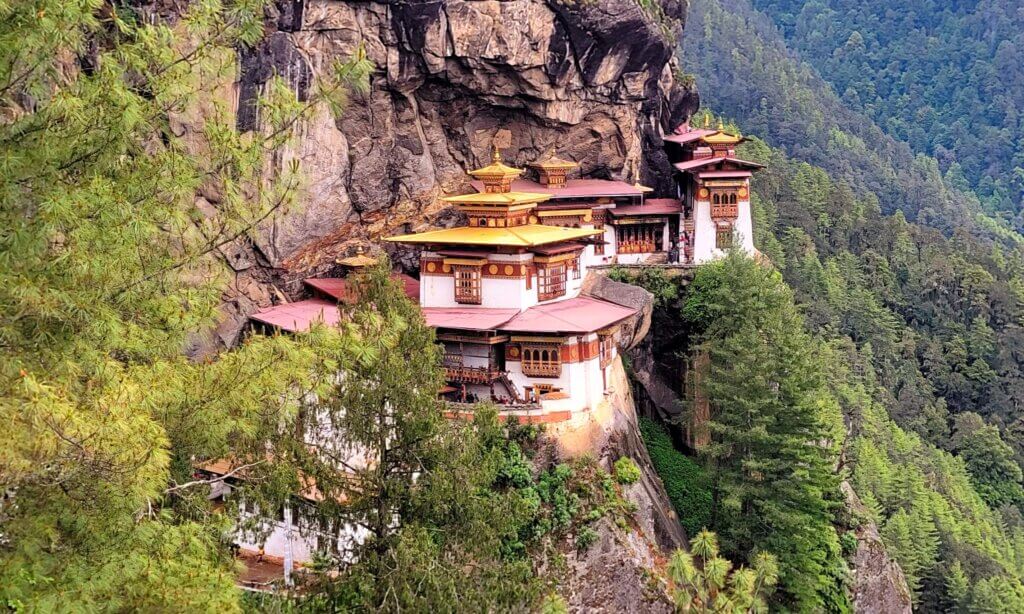
Our third day in Bhutan started at 6:30 am, to make it early to the Tiger’s Nest trail head. The hike is about 6 kilometers long and has some very steep and challenging sections. However, the views from the top are worth the sweat equity!
The Tiger’s Nest Monastery is perched on a cliff high above the Paro Valley and offers stunning views of the surrounding mountains.
We spent a few hours exploring the monastery and taking in the powerful energy there. It was June 28, the birthday of the Lotus Born, so our time there was extra special! After about an hour and a half we headed back down to the valley.
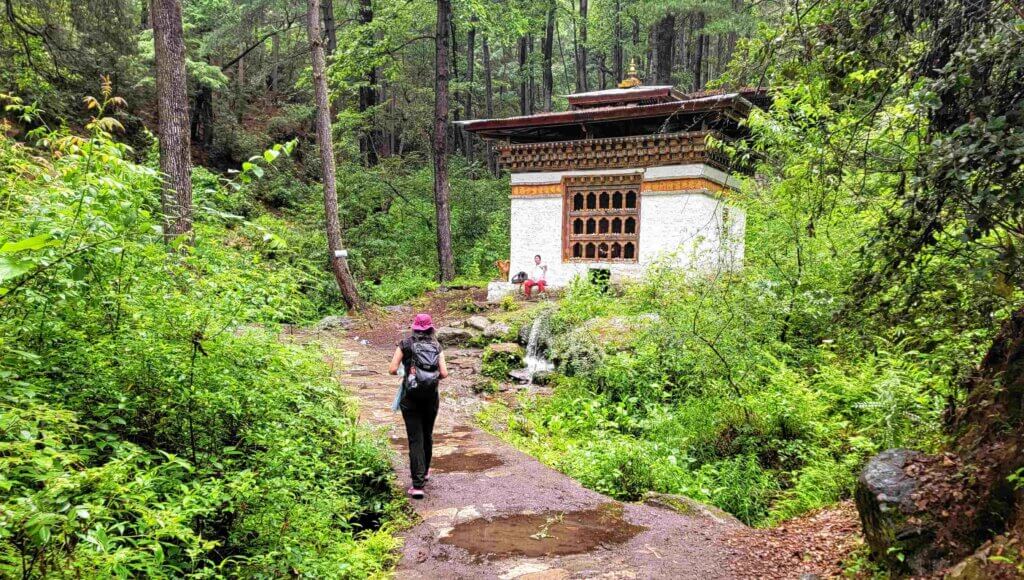
Here are some tips for hiking to the Tiger’s Nest:
- Start early in the morning, as the hike can be crowded in the afternoon.
- It took us 1.5 hours to reach the top, 1.5 hours at the top and 1.25 hours to get down. Some people take longer, so plan accordingly.
- Wear comfortable shoes with good traction.
- Bring enough water and snacks. There is a cafe half way up/down the trail, and one additional place to refill clean water along the way.
- Be aware of the altitude and take breaks if you need them.
- Take your time and enjoy the hike!
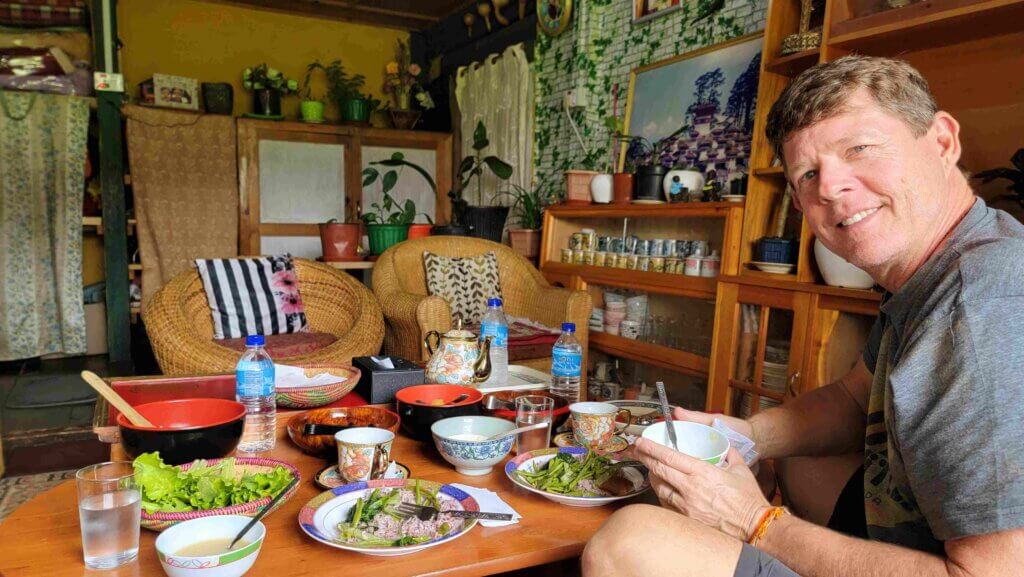
As a reward after our hike, our guide made us lunch at her family house. Gyembo prepared for us amazing vegan food and showed us her very modest house. This was a typical home for most Bhutanese which has the toilet outside in a small wooden hut.
The Cost of our Trip
The total cost of our 2-day trip to Bhutan was $2,690 USD for two people. This included:
- Round-trip flights from Dhaka, Bangladesh to Paro, Bhutan: $1,000
- Visa fees: $80
- Sustainable Development Fee (SDF): $200 per person per night (2 nights/2 people) = $800
- Guide/driver/Accomodation/Food cost: $650 + 25% tip
Keep in mind that the average salary for Bhutanese workers is about $465 USD/month. For guides this can be much lower due to the big drop in tourism due to the new SDF nightly fees. Therefore we felt compelled to tip more. This was not expected from the guides and is absolutely at your discretion.
Was Bhutan Worth the Cost?
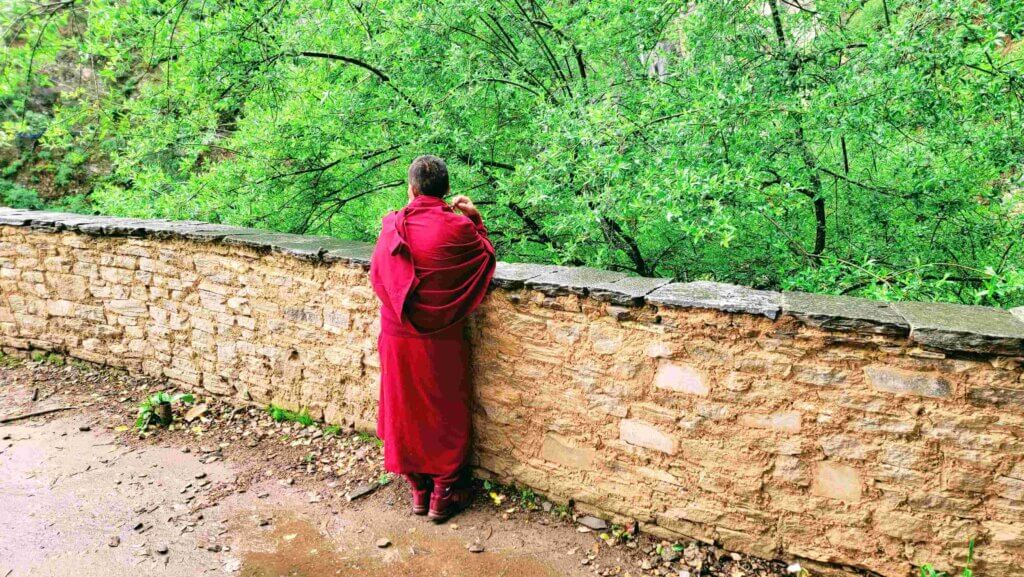
So, was Bhutan worth the Cost? Well, it depends. The mystical ancient and sacred monasteries that we visited were everything that I dreamed them to be.
Furthermore, the Tiger’s Nest Monastery was monumental. The positive and powerful energy there really touched us and will stay with us for a lifetime. However, I had an even more transformational experience in Sri Lanka. Specifically, meeting the “Dr. Doolittle” monk at the Ritigala Monastery. And this was at a tiny fraction of the price.
Beyond the spiritual side of Bhutan, nature there was truly stunning. However, it is quite similar to the mountains, lakes and hiking in British Columbia, Canada. And yes, Canada is not cheap. However, it is still a lot less expensive than Bhutan.
Wrap Up – Bhutan Budget Travel
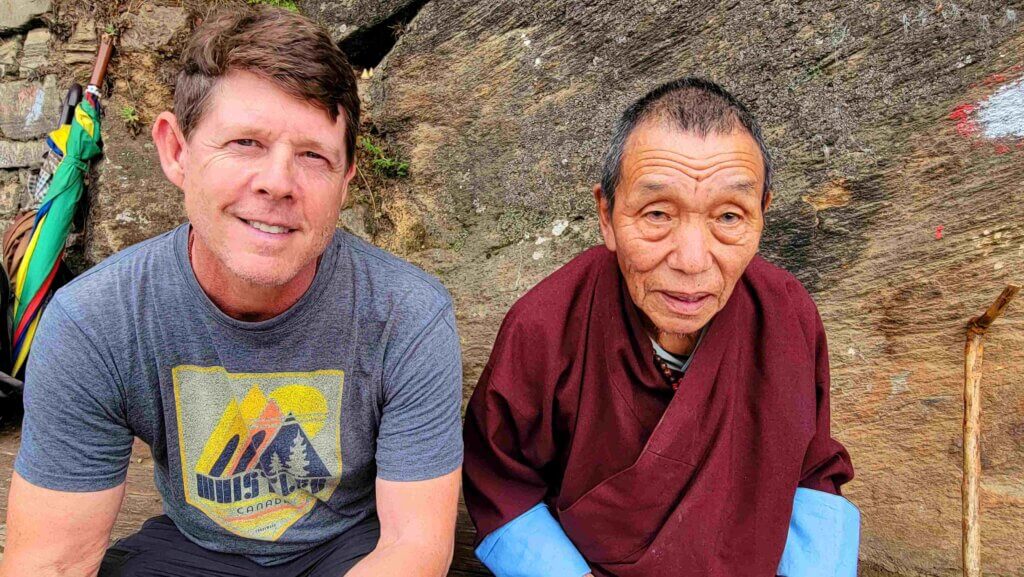
In summary, we really enjoyed our time in Bhutan. Our planning of the flights and guide choice maximized our time there and reduced our costs as much as possible. However, the cost was still higher than any other place we have stayed in, which includes over the water bungalows in the Maldives.
Would we go back? Well, we would love to do a multi-day hike/race in Bhutan like the Snowman Race. And since we visited the daily SDF fee has dropped a whopping $150 USD per day. We were paying $250 USD per day per person and now the SDF fee is down to $100 USD per person per day – which is a lot more manageable.
What about you? Have you been to the land of Thunder Dragons? Did you think that Bhutan was worth the cost? Tell us about your experience. We would love to hear from you.

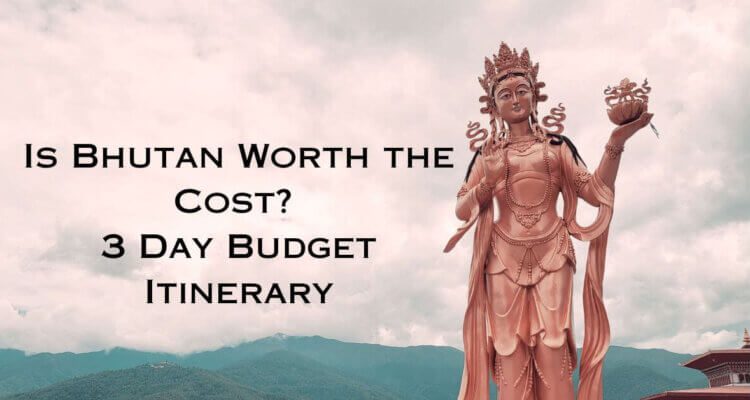
2 Comments
Wow, really seems lovely and interesting but costs are outta this world! There are so many other options that have similar experiences in India and SE Asia. Can’t see many people visiting with these new policies in place – and maybe that is exactly the point…
You are so right, Tim & Tu! Once in Bhutan, it is incredibly cheap. Almost as cheap as Myanmar :). However, it is the government that is causing these problems. And since tourism is Bhutan’s 2nd biggest money maker, it will not be for long. It is truly a lovely country – but I would rather spend my money in Bali, Cambodia or Myanmar.